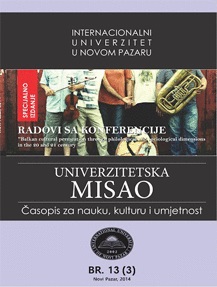CORPUS APPROACH TO ANALYSING GERUND VS INFINITIVE
CORPUS APPROACH TO ANALYSING GERUND VS INFINITIVE
Author(s): Samina Dazdarević, Fahreta Fijuljanin, Izeta BabačićSubject(s): Foreign languages learning, Syntax, Lexis, Philology
Published by: Интернационални Универзитет у Новом Пазару
Keywords: corpus linguistics; corpus approach; concordance; gerund; infinitive; teaching; learning;
Summary/Abstract: The difference between gerund and infinitive is one of those things that comes naturally for native speakers but can be an enormous trouble for English language learners. If they understand the profound difference between the two, they will develop the sense that helps them understand that which one is preferred, in which context. With such language sense, they will be in much better position to deal with even difficult cases. They might not do it right the first time every time, but they will find the problem very easy to understand once being corrected. This paper deals with corpus linguistics since it allows us to see how language is used today and how that language is used in different context, enabling us to teach using gerund or infinitive more effectively. In order to apply corpus linguistics we need two tools: the corpus and the concordancing program that show concordance lines according to what comes before or after a specified word or phrase in this case gerund or infinitive and will let us more extended context of these constructions as they appear in the corpus. The reason of using the Corpus Approach in this paper is because it is empirical, analyzing patterns of language used in natural texts and the other reason is that it is representative since it utilizes a large and principled collection of natural texts as the basis for our analysis. With this article we can illustrate how learners can benefit from becoming language investigators by their own and show that the use of the concordancer can have a considerable influence on the process of gerund vs infinitive learning, stimulating enquiry and speculation on the part of the learner, and helping the learner also to develop the ability to see patterning in the English language and to form generalisations to account for that patterning.
Journal: Univerzitetska misao
- Issue Year: 2014
- Issue No: 13 (3)
- Page Range: 208-224
- Page Count: 17
- Language: English

